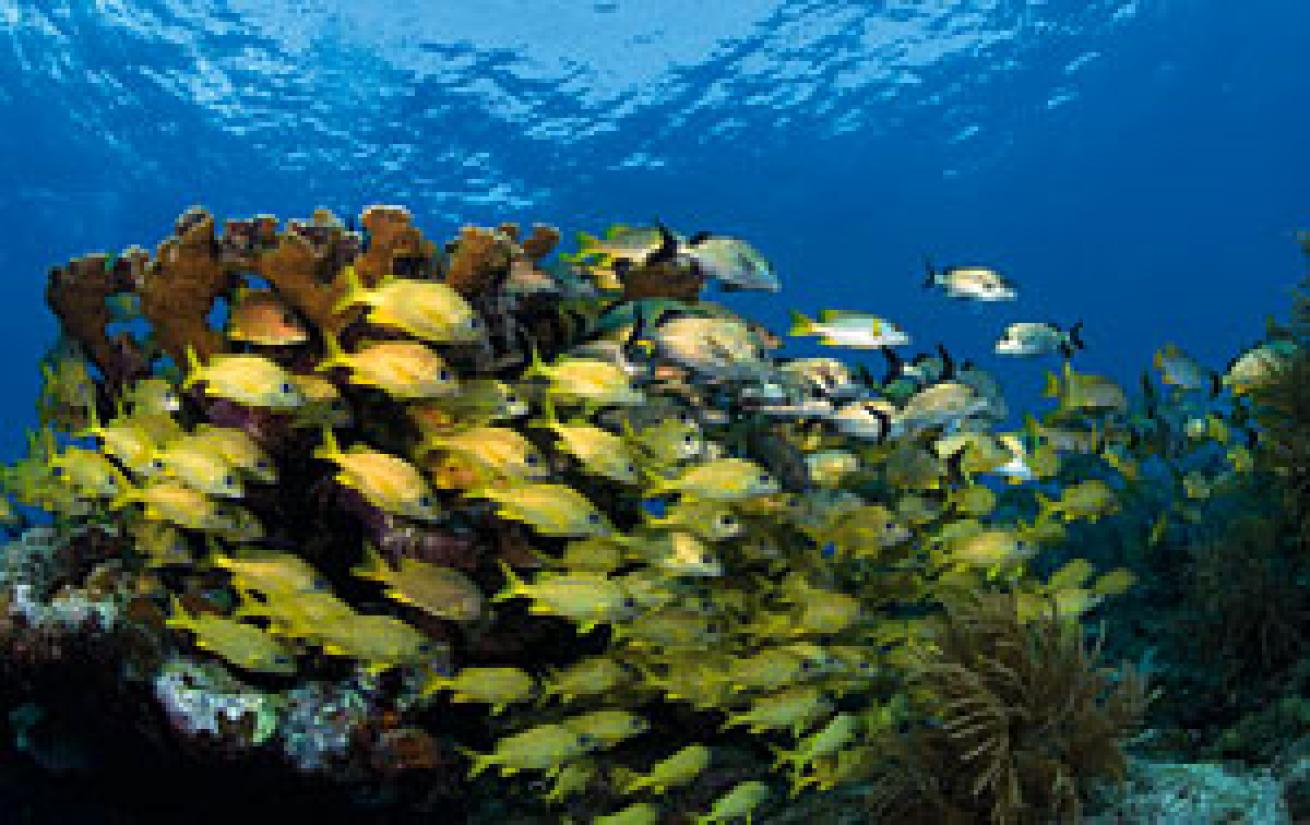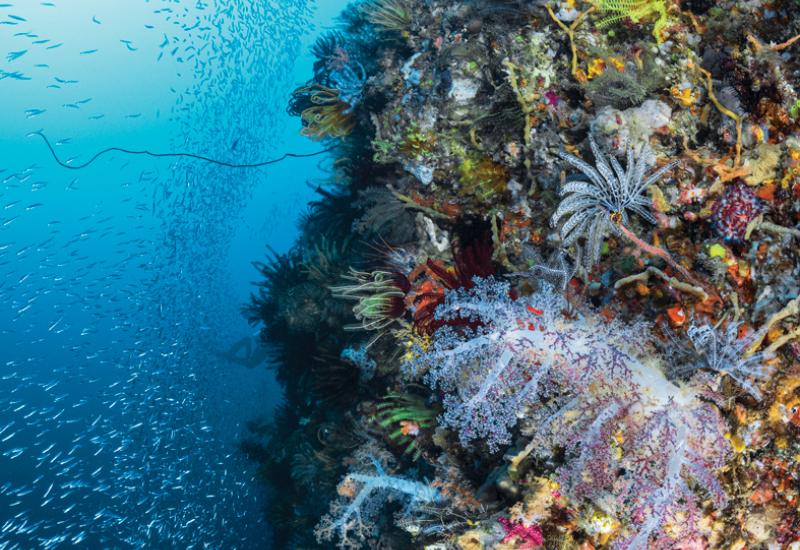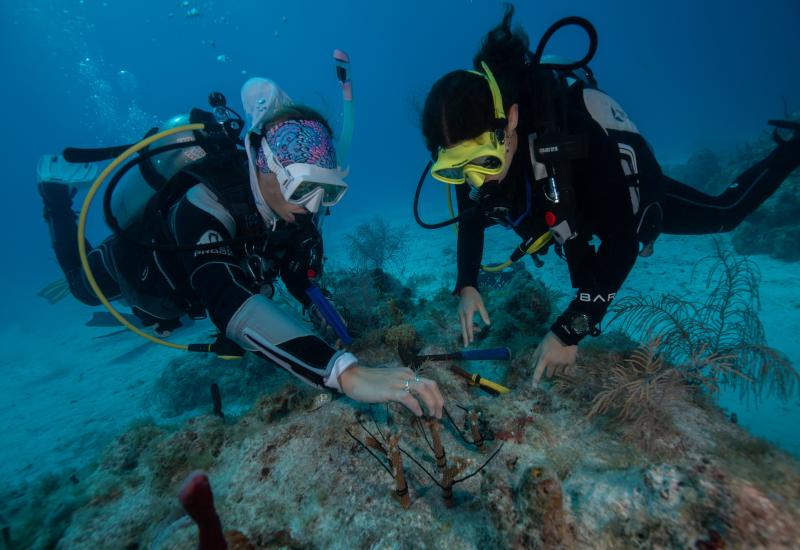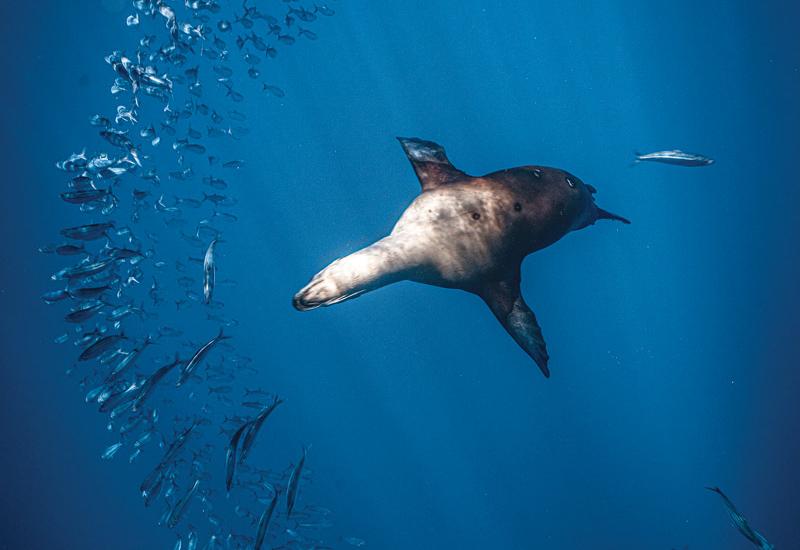Diving in the Florida Keys National Marine Sanctuary

The world's third largest barrier reef — surpassed only by those in Belize and Australia — is also one of the most accessible and diver-friendly destinations in America. The Florida Reef Tract stretches from Key Biscayne, just offshore cosmopolitan Miami, to 70 miles off the western tip of Key West, and every coral head, reef shark and grouper living here is protected by the 3,801-square-mile Florida Keys National Marine Sanctuary, (FKNMS) established by Congress in 1990.
Underwater photographers have no shortage of photo ops: endangered elkhorn coral, rainbow parrotfish, spotted moray eels and schooling blue-striped grunts vie for space in front of the cameras. And wreck divers can get their fix as well on the FKNMS Shipwreck Trail, which features modern military ships like the Duane, a Coast Guard Cutter intentionally sunk off Key Largo in 1987, alongside colonial era wrecks like the San Pedro, an eighteenth-century Spanish galleon— an anchor, replica cannons and a large pile of ballast mark her final resting place about a mile south of Indian Key. The 510-foot Spiegel Grove, intentionally sunk on Dixie Shoal off Key Largo in 2002, is a former Thomaston-class dock landing ship of the United States Navy. She was named for Spiegel Grove, the home and estate in Fremont, Ohio, of Rutherford B. Hayes, the 19th President of the United States. In 2009, the 524-foot ex-military missile-tracking ship, the USNS Gen. Hoyt S. Vandenberg — which once tracked space launches off Cape Canaveral, Fla., and monitored Soviet missile launches during the Cold War — was sunk off Key West.
And the crown jewel of diving within the sanctuary is the Tortugas Ecological Reserve. A cluster of seven reefs 70 miles west of Key West makes up the Dry Tortugas, where spectacular corals and more than 250 fish species, swept in on the Florida Current, thrive untouched by human development. "There are no shortages of fabulous things to see in our waters,” said Brian Keller, science coordinator for the reserve. "But what amazes me are the head corals. They often grow on "stalks,” taking on a mushroom-like appearance. You'll also see bushy gorgonians, large black grouper and mutton snapper.”
InDepth
Dive operators up and down the Keys provide year-round access to the sanctuary. The Dry Tortugas are only accessible by live-aboards from Key West, and only the northern portion of the park is open to divers. For a no-cost permit to dive in the Tortugas Ecological Reserve, call 305-292-0311.
Experience needed: Beginner to Advanced
Conditions: Visibility 40 to 60 feet, but can exceed 100 feet. Water temps range from the mid-80s in summer to low 70s in winter.
Where: The sanctuary starts off Key Biscayne, accessible from Miami, encompasses the waters along both sides of the 130-mile island chain, and extends 70 miles past Key West to include the Dry Tortugas.
When: Year-round, but conditions are best from May to September when the seas are calm and warm, and visibility can break 100 feet.

The world's third largest barrier reef — surpassed only by those in Belize and Australia — is also one of the most accessible and diver-friendly destinations in America. The Florida Reef Tract stretches from Key Biscayne, just offshore cosmopolitan Miami, to 70 miles off the western tip of Key West, and every coral head, reef shark and grouper living here is protected by the 3,801-square-mile Florida Keys National Marine Sanctuary, (FKNMS) established by Congress in 1990.
Underwater photographers have no shortage of photo ops: endangered elkhorn coral, rainbow parrotfish, spotted moray eels and schooling blue-striped grunts vie for space in front of the cameras. And wreck divers can get their fix as well on the FKNMS Shipwreck Trail, which features modern military ships like the Duane, a Coast Guard Cutter intentionally sunk off Key Largo in 1987, alongside colonial era wrecks like the San Pedro, an eighteenth-century Spanish galleon— an anchor, replica cannons and a large pile of ballast mark her final resting place about a mile south of Indian Key. The 510-foot Spiegel Grove, intentionally sunk on Dixie Shoal off Key Largo in 2002, is a former Thomaston-class dock landing ship of the United States Navy. She was named for Spiegel Grove, the home and estate in Fremont, Ohio, of Rutherford B. Hayes, the 19th President of the United States. In 2009, the 524-foot ex-military missile-tracking ship, the USNS Gen. Hoyt S. Vandenberg — which once tracked space launches off Cape Canaveral, Fla., and monitored Soviet missile launches during the Cold War — was sunk off Key West.
And the crown jewel of diving within the sanctuary is the Tortugas Ecological Reserve. A cluster of seven reefs 70 miles west of Key West makes up the Dry Tortugas, where spectacular corals and more than 250 fish species, swept in on the Florida Current, thrive untouched by human development. "There are no shortages of fabulous things to see in our waters,” said Brian Keller, science coordinator for the reserve. "But what amazes me are the head corals. They often grow on "stalks,” taking on a mushroom-like appearance. You'll also see bushy gorgonians, large black grouper and mutton snapper.”
InDepth
Dive operators up and down the Keys provide year-round access to the sanctuary. The Dry Tortugas are only accessible by live-aboards from Key West, and only the northern portion of the park is open to divers. For a no-cost permit to dive in the Tortugas Ecological Reserve, call 305-292-0311.
Experience needed: Beginner to Advanced
Conditions: Visibility 40 to 60 feet, but can exceed 100 feet. Water temps range from the mid-80s in summer to low 70s in winter.
Where: The sanctuary starts off Key Biscayne, accessible from Miami, encompasses the waters along both sides of the 130-mile island chain, and extends 70 miles past Key West to include the Dry Tortugas.
When: Year-round, but conditions are best from May to September when the seas are calm and warm, and visibility can break 100 feet.










